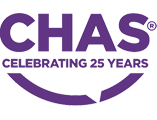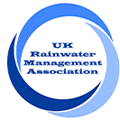Why harvest rainwater in commercial buildings?
28/02/2023
Rainwater Harvesting is the collection, storage and filtration of reclaimed rainwater which can be reused to supply a range of applications, such as toilets, irrigation systems, vehicle washing plants and other commercial uses.
Many people think that collecting rainwater is still only achievable on a small scale through a traditional water butt. Whilst water butts are a great way of harvesting rainwater on a domestic scale, commercial solutions by Stormsaver include many more safety features and technology to maximise water savings. We are going to be using this blog to explain the reasons why all large development projects should have rainwater harvesting installed as standard.
Here are four reasons to install a Rainwater Harvesting System...
We know regulations can be confusing… That is why we have simplified them! The UK Government are proposing to implement a raft of new legislation for buildings and businesses to help reduce the nation’s water consumption. Here are the most important changes you need to know about…
Water is a precious recourse throughout the world. There is a common misconception that water is plentiful in the UK, but this is not the case! Soaring populations and longer, drier summers mean that when rainfall occurs, we need to capture and reuse as much as possible! In fact, England alone will require an 4,000 megalitres of water per day by 2050.
Rainwater Harvesting means we no longer need to waste drinking water for flushing toilets, washing cars and watering plants. By reducing mains water consumption, we can use potable water for where we need it most like drinking, sanitation, and bathing.
Rainwater Harvesting reduces carbon emissions! Many people do not know that saving water with rainwater harvesting can dramatically reduce carbon emissions. Dealing with storm water runoff locally (where it lands) means that runoff does not need to be pumped to large treatment plants which are many miles away. Read more about carbon and rainwater harvesting here.
Rainwater harvesting alleviates pressure on our existing water infrastructure meaning there is less chance of the system being overwhelmed in the event of a storm.
It just makes sense, doesn’t it? Rainwater Harvesting is simple, effective, and efficient. Why not take advantage of our FREE CPD sessions to learn more about rainwater harvesting and water conservation? Learn more here.

My role as a Water Reuse Specialist means I get to keep up to date with all things water conservation. My favourite water saving tip is to turn taps off when brushing your teeth! I think rainwater harvesting and the water reuse industry is exciting, and I love sharing updates with our customers. View Matt’s Stormsaver profile here.
Terms & Privacy Policy Cookie Policy Site Map
Copyright © 2024 Stormsaver Ltd. All Rights Reserved.





